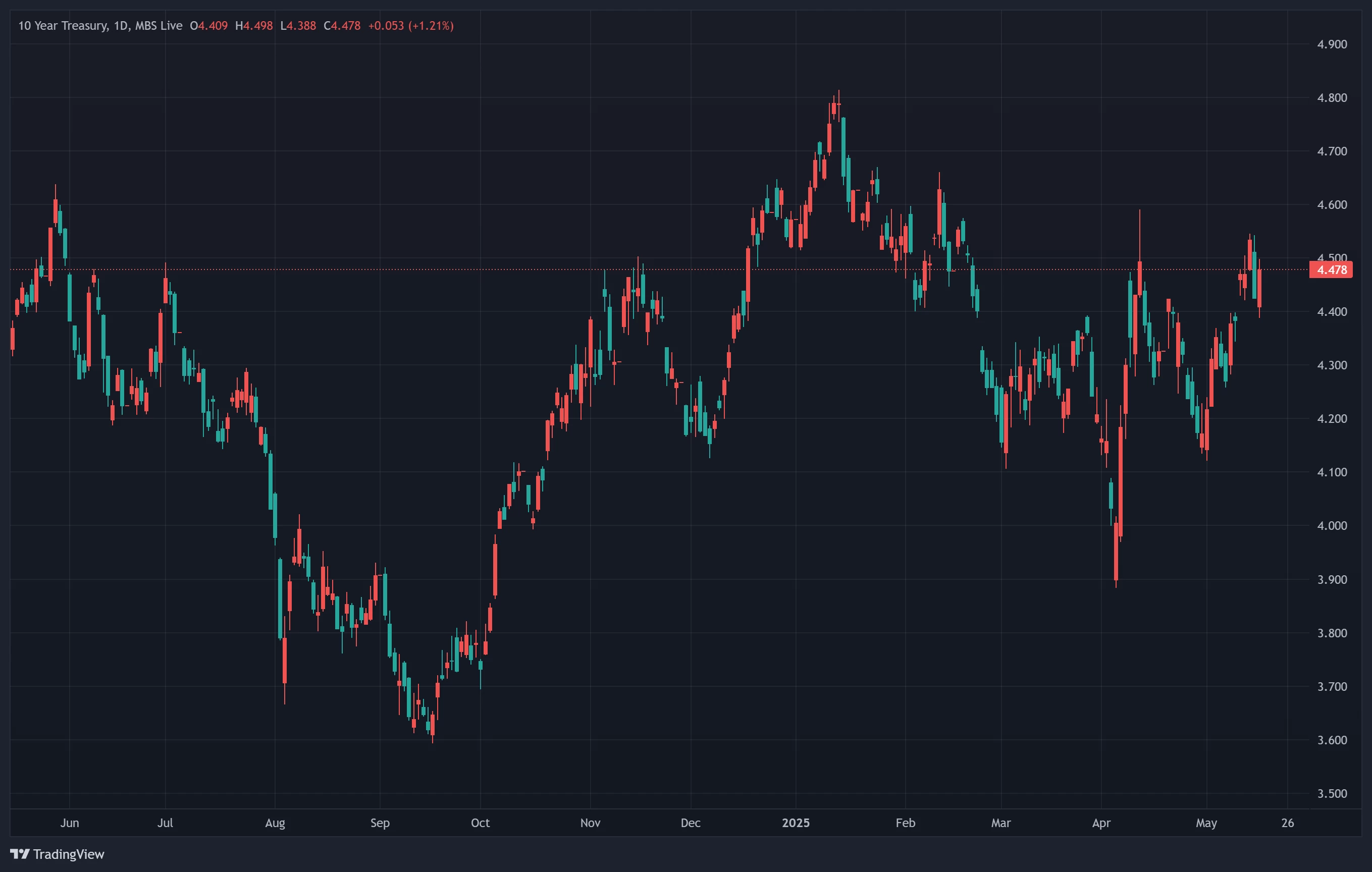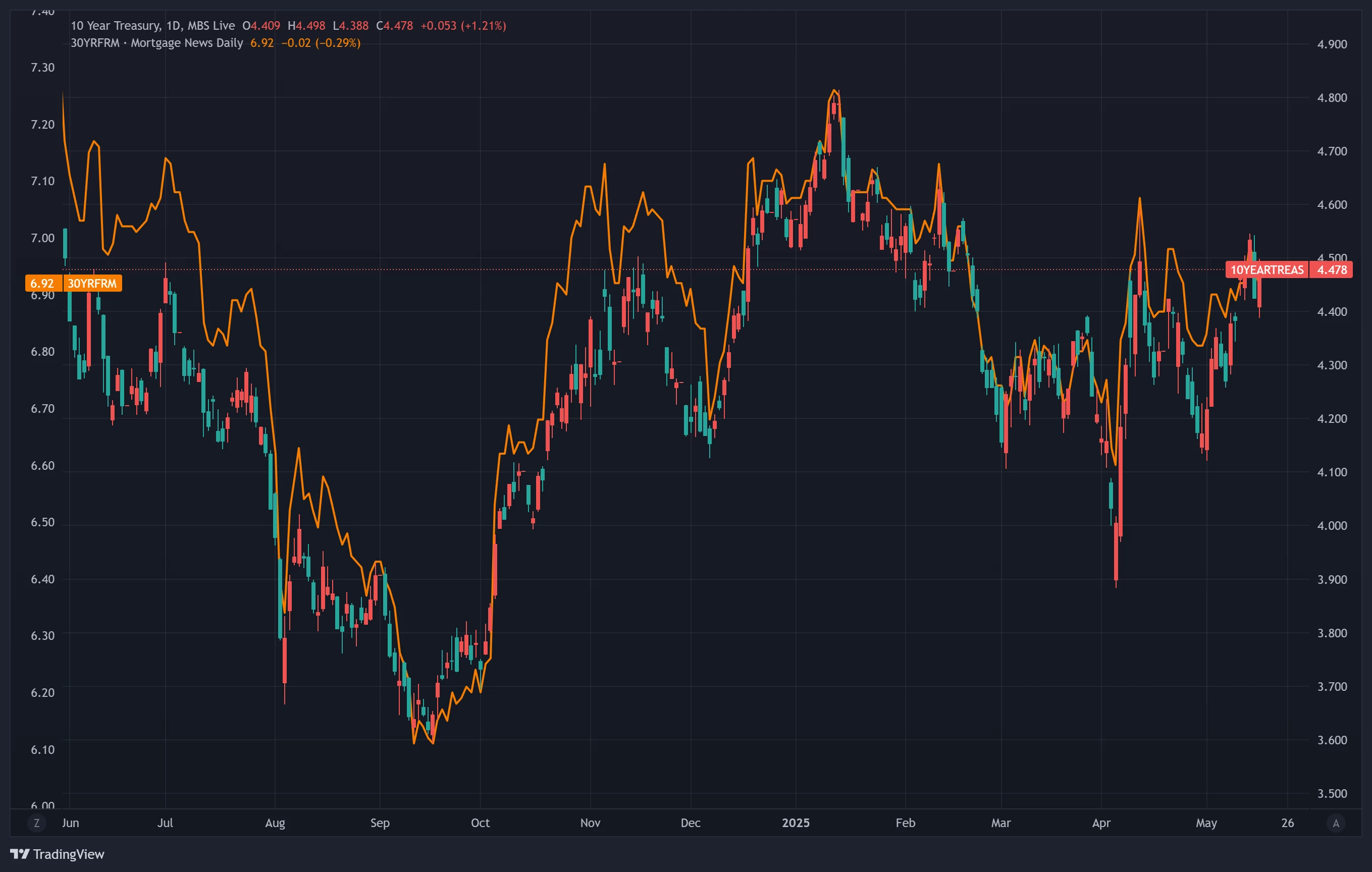

If you’ve been waiting for mortgage rates to drop, 2025 may not bring the relief you’re hoping for.
Did you know that over $9.2 trillion in U.S. debt is set to mature in 2025? This unprecedented 'maturity wall' could significantly impact mortgage rates and the broader economy. At the time of this writing, that is roughly one quarter of our nation's debt.
Despite cooling inflation and growing expectations for Federal Reserve rate cuts, long-term interest rates—and therefore mortgage rates—could remain stubbornly high. Why? A massive wave of government debt is coming due, and how it’s handled may trigger a phenomenon known as fiscal dominance.
In this post, we break down:
- What fiscal dominance means
- The size and timing of the 2025 maturity wall
- Why this matters for interest rates and the mortgage market
- What homebuyers and real estate professionals should watch
Understanding Fiscal Dominance: A Hidden Force in the Economy
Fiscal dominance happens when a government’s debt and deficit obligations start to influence or override monetary policy. In other words, the central bank (like the Federal Reserve) loses its freedom to manage inflation or employment—because raising interest rates would cause too much pain for the federal budget.
When debt levels are very high, even modest rate hikes make government borrowing extremely expensive. As a result, the Fed may avoid raising rates even when it should—or feel pressured to lower them prematurely—not because it’s best for the economy, but to help service the debt.
That’s fiscal dominance—and it’s becoming more than a theory.
The 2025 Maturity Wall: A Looming Financial Challenge
During the pandemic, the U.S. Treasury issued trillions of dollars in short-term debt to finance stimulus programs and emergency measures. That decision created a “maturity wall”: a massive concentration of debt that needs to be refinanced in a short period of time.
🔎 Key stats:
- $9.2 trillion in marketable Treasury debt matures in 2025
- 55–60% of that comes due before July, 2025
- When combined with projected 2025 deficits, total gross issuance may exceed $10 trillion—the largest in U.S. history
This flood of debt will hit markets while the Fed is still running quantitative tightening and pulling back its balance sheet support. In short, there may be more supply than demand—and that imbalance could push long-term interest rates higher.

Why This Matters for Mortgage Rates
Most people assume that when the Fed cuts interest rates, mortgage rates drop too. But that’s not always the case—especially in an environment of fiscal dominance and supply-driven rate pressure.
Here’s what’s likely to happen:
1. Term premiums rise
Investors demand extra compensation for holding long-term bonds in an uncertain fiscal environment. This premium drives up Treasury yields—even if short-term rates are falling.
2. Mortgage spreads stay wide
The difference between the 10-Year Treasury yield and the 30-Year fixed mortgage rate (the “primary/secondary spread”) can remain elevated due to market volatility and risk aversion.
3. Buyers face persistent affordability challenges
Even with economic cooling, mortgage rates may hover in the 6.5–7.5% range, making it harder for first-time buyers or move-up borrowers to qualify.

What to Watch in 2025
To anticipate mortgage rate moves in 2025, keep an eye on:
| Indicator | What it Signals |
| 10-Year Treasury Yield | Long-term interest rate pressure |
| Primary/Secondary Spread | Mortgage market risk sentiment |
| Treasury Auctions | Investor demand for government debt |
| Fed Balance Sheet Policy | QT tapering could ease long-end pressure |
| MBS Pricing Trends | Secondary market appetite for mortgage risk |
What Homebuyers and Realtors Should Do
In this market, having a proactive strategy is more important than ever. Here’s how to stay ahead:
- Get educated: Understand that mortgage rates don’t always follow the Fed.
- Use creative structures: Buydowns, seller concessions, and fixed rate strategies matter more than ever.
- Time your rate locks: Be aware of bond and treasury auction dates, inflation prints, and Fed meetings.
- Work with professionals who follow the data daily.
Final Thoughts
We’re entering a market where fiscal policy, not the Fed, may be the real driver of interest rates.
The maturity wall is real, and fiscal dominance isn’t just academic—it’s unfolding right now. For borrowers, investors, and real estate professionals, understanding these dynamics is key to making smart financial decisions in 2025 and beyond.
👋 Ready to navigate the complexities of the 2025 financial landscape? 📅 Contact Us

Comments
Comment Submitted!